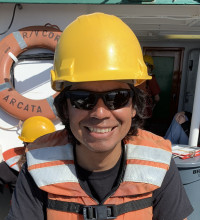PROJECT HIGHLIGHT:
This project conducted field surveys of surf zone ecosystems in California Marine Protected Areas, both in the water and on the beach, clarifying researchers’ picture of a dynamic, essential, understudied ecosystem.
PROJECT SUMMARY:
In 2012, California finalized a plan for its system of Marine Protected Areas (MPAs) — setting aside a network of sites where activities like fishing (and mineral extraction) are limited or prohibited altogether to protect oceanic resources for future generations. To understand whether these MPAs are effectively protecting the ocean, they must be monitored.
Sandy beaches and their surf zones are key “edge” ecosystems that form a significant component of many of the MPAs. And while beaches and surf zones are well-known and beloved resources for humans, they also provide key foraging areas for fish, birds and marine mammals. But ecological monitoring of these ecosystems is limited — an important gap given climate change and other human-caused changes to the coastline.
To enhance the understanding of sandy beach and surf zone ecosystems in California, with a particular eye toward analyzing the performance of MPAs, this project conducted a variety of field surveys. The surf zone surveys focused on fish at 13 MPA sites, paired with 13 carefully matched reference sites, extending from Humboldt to San Diego County. At each beach, surf zone fish were surveyed using nets and underwater video cameras. Three surf zone surveys were conducted during 2023.
The beach monitoring consisted of three monthly field surveys conducted in the fall of 2023 at 18 MPA sites, each paired with a corresponding unprotected reference site. These surveys focused on the diversity and abundance of beach birds and of the kelp and seaweed that washes up on shore, known as wrack, as well as beach characteristics. The timing of these beach surveys coincided with the highest expected abundance of shorebirds and peak inputs of kelp wrack to beaches.
This was a continuation of earlier studies conducted using the same methodologies. See also R/MPA-44 and R/MPA-24.
To learn more about the continuation of this project, see R/MPA-50B.
 Jose Marin Jarrin
Jose Marin Jarrin